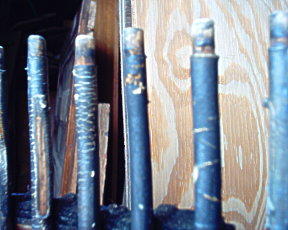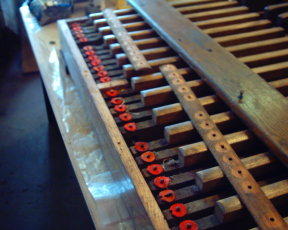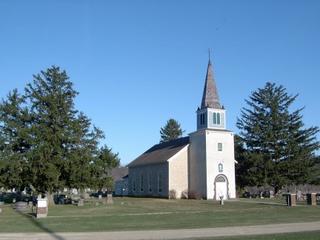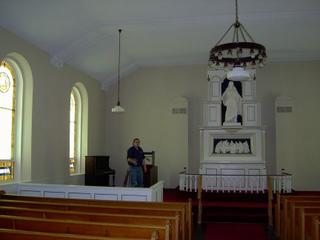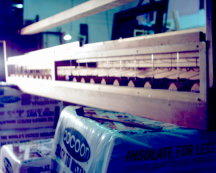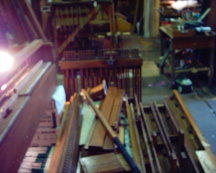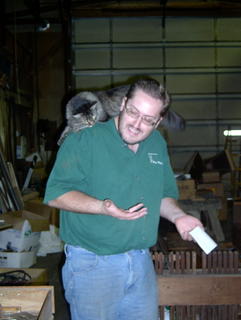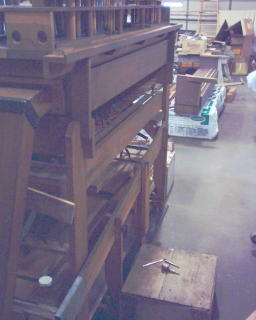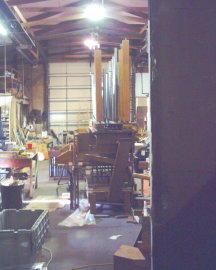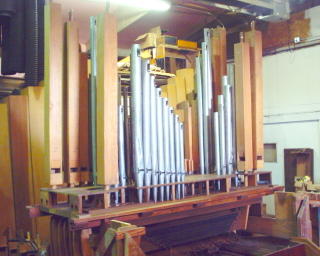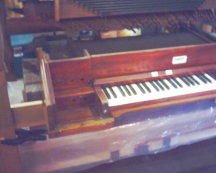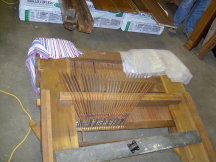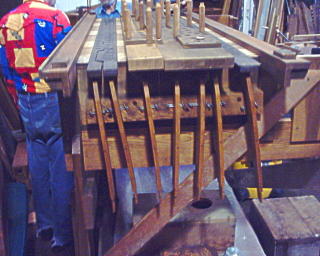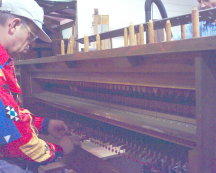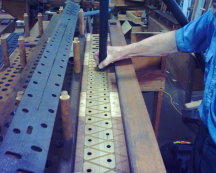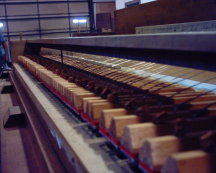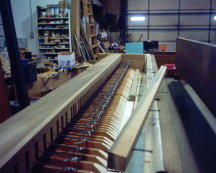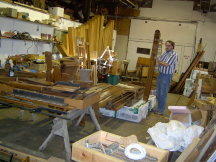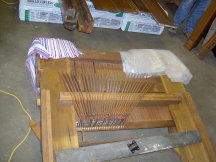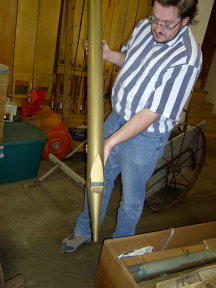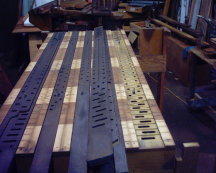

Things really fly at times...we have the windchest righted and on its frame. We are no ready to look at the top of the unit. It is so pleasing ( and a HUGE relief) to see that this area is in nearly perfect condition also.
This is the heart of the instrument. When the
pallet underneath opens up it lets air into the
channel. If the
slider (black thing)
hole lines up with the
channel hole, wind flows and the pipe
speaks. If it doesn't, well, it doesn't.
Channel: In a
tracker windchest, the area immediately above the
pallet. All the pipes that could possibly sound on that note are arranged so as to sit on
channel holes on one
channel.
Channel Hole: The hole beneath the
slider hole. If the
pallet is open air tries to move through the
channel hole.
Slider: A piece of wood or phenolic with holes drilled at specific intervals. All the pipes of a rank are arranged on one particular slider.
Split slider: A
slider that has two sections, so that one may be moved without disturbing the other.
Slider Hole: A hole drilled in a
slider. It is placed in such a way so that all the holes on a
slider will either match their specific
channel hole or block it.
Speak: When referring to an organ pipe, to
speak is to make a sound (hopefully pleasant)
In the second picture above, I have moved a
slider aside to show the
channel holes underneath it. The
slider holes can either match the
channel holes and allow the pipes to
speak or block the holes, and thus the air, to prevent the pipes from speaking.

